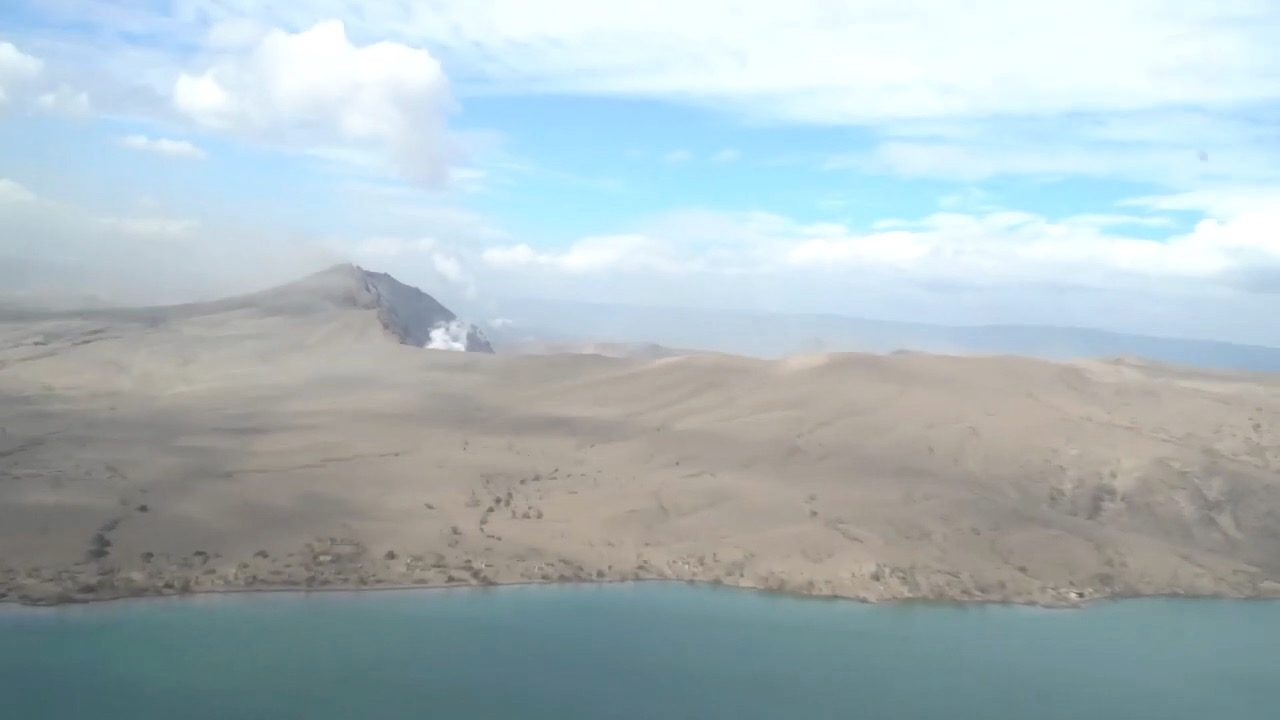SUMMARY
This is AI generated summarization, which may have errors. For context, always refer to the full article.

MANILA, Philippines (UPDATED) – One week since Taal Volcano started erupting in the province of Batangas, Alert Level 4 remains raised, which means a hazardous eruption could still occur “within hours to days.”
The Philippine Institute of Volcanology and Seismology (Phivolcs) said on Sunday, January 19, that “intense” volcanic earthquakes continue – an indication that magma is still rising within the volcano. (READ: Taal Volcano’s 2020 eruption: What we know so far)
Phivolcs is using two networks to monitor the volcanic earthquakes – the Philippine Seismic Network which covers the whole country, and the Taal Volcano Network, which includes small earthquakes undetected by the former.
In its 6 pm update on Sunday, Phivolcs said the Philippine Seismic Network has plotted 701 volcanic earthquakes since 1 pm of January 12. Of these, 176 were felt with intensities ranging from Intensity I to V.
Just from 5 am to 4 pm on Sunday, there were 10 volcanic earthquakes plotted, including one felt event with Intensity I.
Meanwhile, also from 5 am to 4 pm on Sunday, the Taal Volcano Network recorded 244 volcanic earthquakes, including 3 low-frequency earthquakes. Phivolcs Director Renato Solidum Jr earlier explained that in low-frequency earthquakes, vibrations are not prolonged.
“Such intense seismic activity likely signifies continuous magmatic intrusion beneath the Taal edifice, which may lead to further eruptive activity,” Phivolcs said.
Aside from volcanic earthquakes, there continues to be “weak” emission from Taal’s main crater.
“Since 8 am this morning, Taal Volcano’s activity has been generally characterized by weak emission of steam-laden plumes 300 to 500 meters high from the main crater that drifted to the general southwest,” Phivolcs said.
Notably, though, sulfur dioxide (SO2) emission was measured at an average of 4,353 tons per day at 5 pm on Sunday, from the previous average of 1,442 tons per day that Phivolcs cited in its 8 am bulletin.
Phivolcs states on its website that SO2 is “a major gas component of magma.” According to the United States Geological Survey, SO2 is “released from a volcano when magma is relatively near the surface.”
The Philippine Atmospheric, Geophysical, and Astronomical Services Administration (PAGASA) issued a wind forecast in relation to Taal as well.
Citing PAGASA’s wind forecast, Phivolcs said that if the eruption plume remains below 5 kilometers, ash will be drifted to south and southwest of the main crater. But if a major eruption occurs on Sunday and the eruption column exceeds 5 kilometers, “ash will also be drifted to the eastern and northeastern sectors and may fall on portions of Batangas, Laguna, and Quezon.”
“Residents around the volcano are advised to guard against the effects of heavy and prolonged ashfall. Civil aviation authorities must advise pilots to avoid the airspace around Taal Volcano as airborne ash and ballistic fragments from the eruption column pose hazards to aircraft,” Phivolcs reiterated.
If a hazardous eruption occurs, Alert Level 5 – the highest – would be raised. This may or may not happen. (READ: TIMELINE: Taal Volcano eruptions since 1572)
Phivolcs stressed that there must be “total evacuation” of Taal Volcano Island as well as high-risk areas within a 14-kilometer radius from the main crater and “along the Pansipit River Valley where fissuring has been observed.” (WATCH: Fishermen risk lives for catch around restive Taal Volcano)
Fissuring means cracks were seen on the ground in parts of Batangas province, particularly in the towns of Lemery, Agoncillo, Talisay, and San Nicolas, which are all high-risk areas.
Phivolcs earlier explained that ground deformation indicates magma is rising at Taal.
Asked on Sunday whether there is a possibility of Taal’s status being downgraded to Alert Level 3, Phivolcs said it is looking at all scenarios.
“Lahat ng scenarios kino-consider natin…. Maaari tayong magka-lull and then magkaroon tayo ng malakas na pagputok, or we actually cannot relax yet at puwede pa magkaroon ng eruption, or the eruption has died down,” said Maria Antonia Bornas, chief of the Phivolcs Volcano Monitoring and Eruption Prediction Division, in a press briefing on Sunday morning.
(We’re considering all scenarios…. We could have a lull and then have a major eruption, or we actually cannot relax yet and there could still be a hazardous eruption, or the eruption has died down.)
At least 11 towns in Batangas are under complete lockdown to prevent residents from returning to their homes.
The Batangas provincial government said there are now more than 160,000 evacuees from the province, distributed in evacuation centers in Batangas, Cavite, and Quezon provinces. (WATCH: Taal evacuees rummage for clothes that fit)
Classes are suspended in the entire Batangas while Taal Volcano remains under Alert Level 4. (READ: Lipa school aims to provide sense of normalcy, dignity to Taal evacuees)
So far, the cost of agricultural damage in the region of Calabarzon is pegged at P3.06 billion. Ashfall destroyed various crops. (READ: How to stay safe during volcanic ashfall)
Both Batangas and Cavite are under a state of calamity. (IN PHOTOS: ‘We will rise’) – Rappler.com
Add a comment
How does this make you feel?
There are no comments yet. Add your comment to start the conversation.